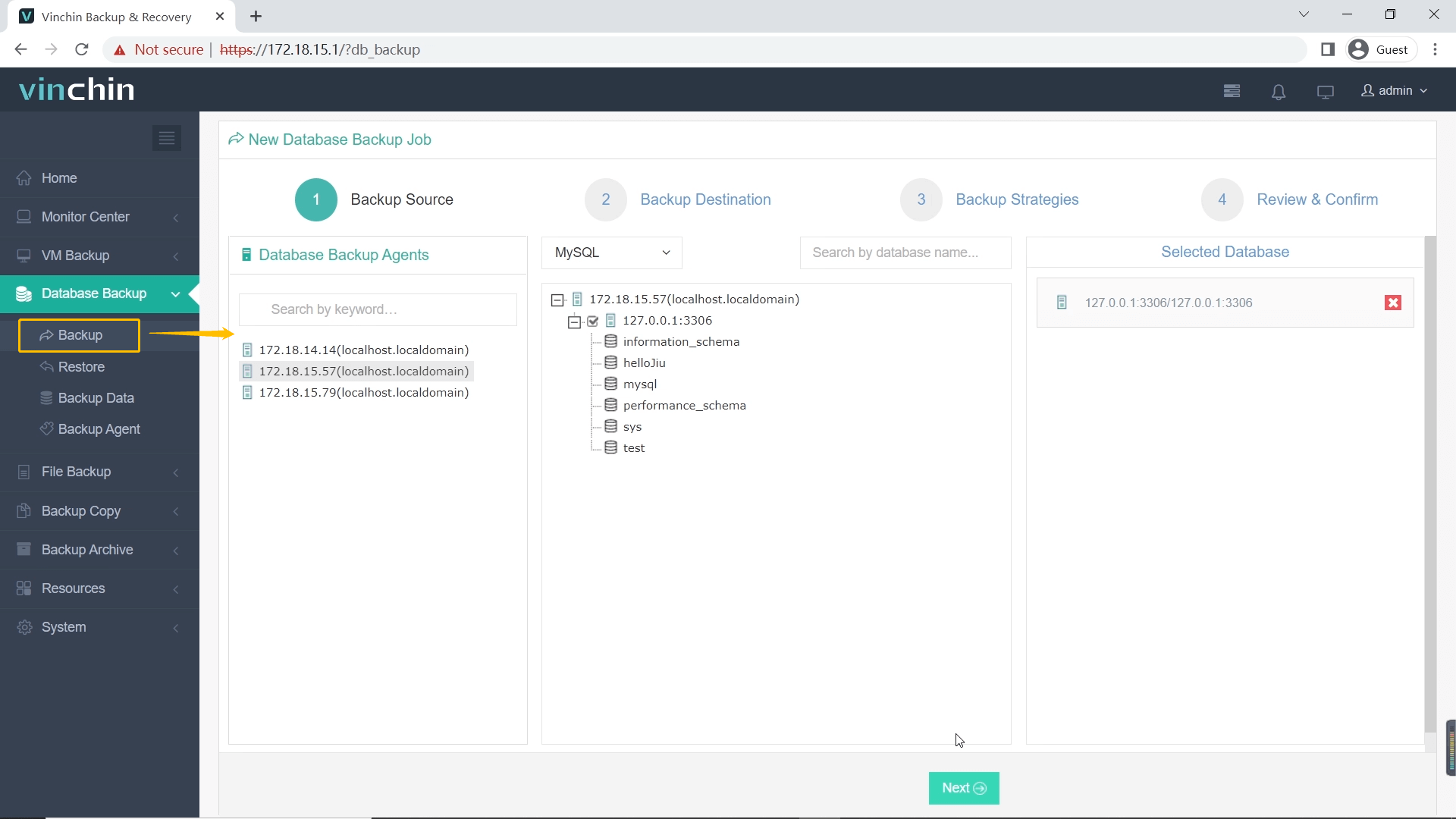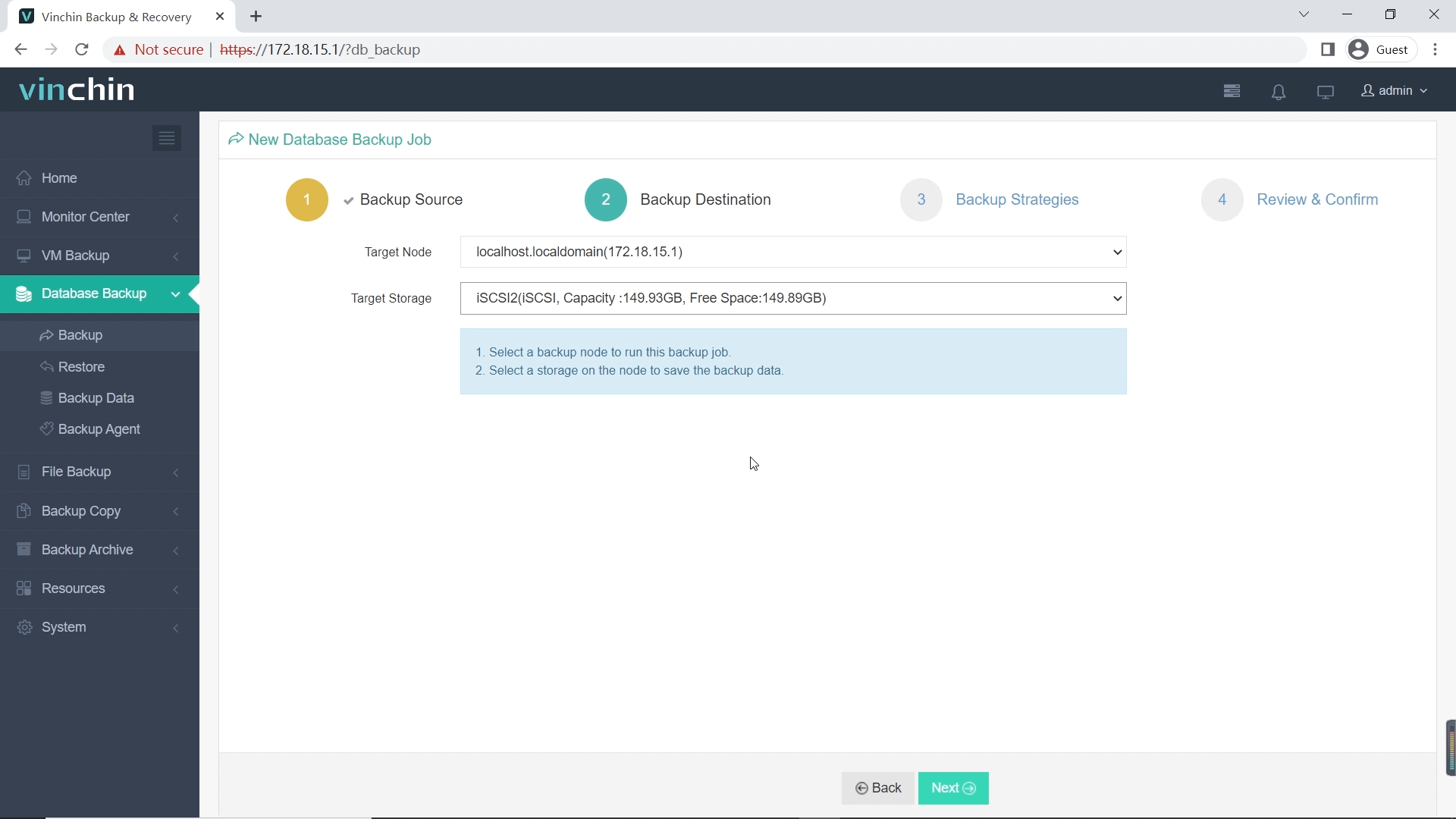-
What Is MySQL Backup Database Table?
-
Why Regularly Back Up MySQL Tables?
-
How to Back Up a MySQL Table Using Mysqldump?
-
How to Back Up a MySQL Table with phpMyAdmin?
-
Enterprise-Level Protection with Vinchin Backup & Recovery
-
MySQL Backup Database Table FAQs
-
Conclusion
Backing up your MySQL database tables is more than a best practice—it’s essential for business continuity. Imagine an accidental drop of a key table during routine maintenance or a failed update that corrupts only part of your data. These events happen without warning. For IT operations teams, having reliable table-level backups means you can recover quickly from mistakes or meet strict compliance requirements without restoring entire databases.
This guide walks you through several methods to back up individual MySQL tables—from simple command-line steps to advanced automation—so you can choose what fits your environment best.
What Is MySQL Backup Database Table?
A MySQL backup database table is simply a copy of one or more tables from your database saved in a format that lets you restore them later if needed. You can back up just the structure (schema), just the data, or both together. Most often, these backups are created using command-line utilities like mysqldump or graphical interfaces such as phpMyAdmin.
Why focus on backing up specific tables? Sometimes only certain parts of your data change frequently or require special protection due to business rules or regulations. By targeting individual tables, you save time and storage while still protecting vital information.
Why Regularly Back Up MySQL Tables?
Regular backups aren’t optional—they’re insurance against unexpected loss caused by hardware failure, software bugs, ransomware attacks, even honest mistakes made late at night! With frequent snapshots:
You restore lost/corrupted content quickly without affecting unrelated parts of your system,
Test risky changes safely knowing rollback is possible,
Move subsets between dev/test/prod environments easily,
Meet legal retention/audit obligations confidently,
Backups give peace of mind—and sometimes save careers!
How to Back Up a MySQL Table Using Mysqldump?
The most common way to back up one or more MySQL tables is with the mysqldump utility—a tool included with every standard installation of MySQL Server.
Before starting:
Make sure you have access rights to the server and target database.
On Windows systems,
mysqldump.exeusually lives inC:\Program Files\MySQL\MySQL Server 8.0\bin.On Linux/Unix systems, it’s typically found at
/usr/bin/mysqldump.
For security reasons, avoid putting passwords directly into scripts; instead use an option file like ~/.my.cnf for authentication details.
Back Up a Single Table
To create a backup of one table:
mysqldump -u [username] -p -h [host] [database_name] [table_name] > [output_file.sql]
Replace [username], [host], [database_name], [table_name], and [output_file.sql] with your actual values.
Example:
mysqldump -u root -p -h localhost mydb customers > customers_backup.sql
After entering your password when prompted, this creates an SQL file containing both structure and data for the chosen table.
Back Up Multiple Tables
You can specify several tables by listing them after the database name:
mysqldump -u root -p -h localhost mydb orders products > orders_products_backup.sql
This saves all selected tables into one file—handy if related data needs consistent recovery points.
Back Up Only Table Structure
If you want just the schema without any rows:
mysqldump -u root -p -h localhost --no-data mydb customers > customers_structure.sql
The resulting file contains only CREATE TABLE statements—useful for migrating schemas between environments.
Back Up Only Table Data
To export only row contents (without structure):
mysqldump -u root -p -h localhost --no-create-info mydb customers > customers_data.sql
This produces INSERT statements but skips CREATE TABLE commands—ideal when updating existing structures elsewhere.
How to Back Up a MySQL Table with phpMyAdmin?
Prefer not to use command lines? phpMyAdmin offers an easy web-based interface ideal for small-to-medium workloads or less technical users.
First log in via your browser and select your target database from the left sidebar—you’ll see all available tables listed there.
1. Click the database name so its list of tables appears.
2. Check boxes next to each table you wish to back up.
3. Click the Export tab at page top.
4. In Export Method, pick Quick for default options or Custom if you need fine control over which objects get exported.
5. Confirm that Format is set as SQL.
6. Click Go—your browser downloads an SQL file containing selected content right away!
phpMyAdmin works well unless dealing with very large tables; then timeouts may occur due to PHP limits imposed by web servers. For heavy-duty exports over millions of rows, stick with command-line tools like mysqldump instead—they’re faster and more robust under load.
Enterprise-Level Protection with Vinchin Backup & Recovery
For organizations seeking robust automation and streamlined management beyond manual scripting, enterprise solutions become essential. Vinchin Backup & Recovery stands out as a professional platform supporting today’s mainstream databases—including full compatibility with MySQL alongside Oracle, SQL Server, MariaDB, PostgreSQL, PostgresPro, and MongoDB environments. It delivers features such as incremental backup tailored for efficient storage use on large datasets; batch database backup; flexible GFS retention policies; cloud backup integration; and ransomware protection—all designed to ensure rapid recovery while minimizing operational overhead and risk exposure across diverse infrastructures.
Vinchin Backup & Recovery makes safeguarding your critical data straightforward through its intuitive web console interface:
Step 1: Select the MySQL database to back up

Step 2: Choose the backup storage

Step 3: Define the backup strategy

Step 4: Submit the job

Trusted globally by thousands of enterprises and rated highly by industry analysts, Vinchin Backup & Recovery offers comprehensive protection with simplicity—and provides a fully featured free trial valid for 60 days so you can evaluate its capabilities firsthand before deployment.
MySQL Backup Database Table FAQs
Q1: What's the safest way to automate daily single-table exports?
A1: Use CRON on Linux/MacOS (crontab –e) or Task Scheduler on Windows plus store credentials securely outside visible script files.
Q2: How do I verify that last night's backup isn't corrupted?
A2: Restore it into a test environment using MYSQL < BACKUP_FILE.SQL then check row counts match original source.
Conclusion
Backing up individual MySQL tables protects against everyday risks—from user errors to system failures—and keeps businesses resilient under pressure. Whether scripting manual jobs or automating everything end-to-end with Vinchin's platform, regular verified backups ensure fast recovery whenever trouble strikes next!
Share on:





